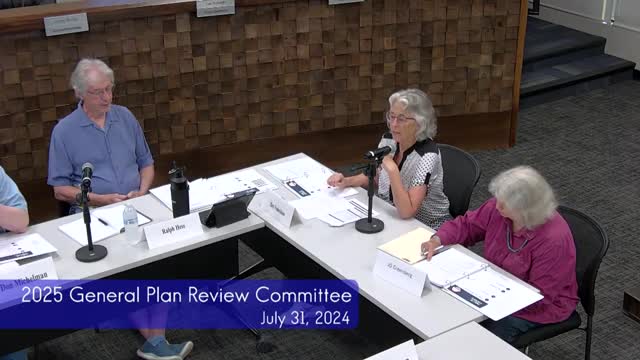Trans Rights Debate Sparks Divisive Community Conflict
August 01, 2024 | Prescott City, Yavapai County, Arizona

This article was created by AI summarizing key points discussed. AI makes mistakes, so for full details and context, please refer to the video of the full meeting. Please report any errors so we can fix them. Report an error »

In a recent government meeting, officials engaged in a heated discussion regarding the intersection of anti-discrimination measures and the rights of women, particularly in relation to transgender individuals. The dialogue highlighted a growing concern over the implications of expanding anti-discrimination language in the city’s general plan, with some officials arguing that it could undermine women's rights, particularly in single-sex spaces such as sports and beauty pageants.
One official expressed apprehension that the proposed language might be perceived as prioritizing trans rights over women's rights, potentially alienating voters who feel strongly about maintaining privacy in single-sex environments. This sentiment was echoed by others who criticized the proposed language as \"fluff\" that lacks actionable substance. They argued that without concrete measures, such as those implemented in Scottsdale, Arizona—where a dedicated office for diversity and inclusion exists and complaints can be formally submitted—the city's efforts would be ineffective.
Conversely, proponents of the expanded language argued that it is essential for fostering a sense of safety and belonging for marginalized groups, particularly LGBTQ+ individuals. They pointed to survey results indicating experiences of discrimination in Prescott and emphasized the importance of making all residents feel welcome. Supporters contended that the language serves as a vital statement against discrimination, potentially impacting mental health outcomes for vulnerable populations, including LGBTQ+ youth.
The discussion also touched on the broader implications of such measures, with some officials suggesting that the city should aspire to create an inclusive environment, reflecting its identity as \"everybody's hometown.\" They argued that while the language may not enforce legal consequences, it could provide reassurance to those who feel marginalized.
As the meeting concluded, the divide between the two perspectives remained evident, with officials acknowledging the complexity of balancing rights and protections for all community members. The outcome of this debate could significantly shape the city’s approach to inclusivity and discrimination in the future.
One official expressed apprehension that the proposed language might be perceived as prioritizing trans rights over women's rights, potentially alienating voters who feel strongly about maintaining privacy in single-sex environments. This sentiment was echoed by others who criticized the proposed language as \"fluff\" that lacks actionable substance. They argued that without concrete measures, such as those implemented in Scottsdale, Arizona—where a dedicated office for diversity and inclusion exists and complaints can be formally submitted—the city's efforts would be ineffective.
Conversely, proponents of the expanded language argued that it is essential for fostering a sense of safety and belonging for marginalized groups, particularly LGBTQ+ individuals. They pointed to survey results indicating experiences of discrimination in Prescott and emphasized the importance of making all residents feel welcome. Supporters contended that the language serves as a vital statement against discrimination, potentially impacting mental health outcomes for vulnerable populations, including LGBTQ+ youth.
The discussion also touched on the broader implications of such measures, with some officials suggesting that the city should aspire to create an inclusive environment, reflecting its identity as \"everybody's hometown.\" They argued that while the language may not enforce legal consequences, it could provide reassurance to those who feel marginalized.
As the meeting concluded, the divide between the two perspectives remained evident, with officials acknowledging the complexity of balancing rights and protections for all community members. The outcome of this debate could significantly shape the city’s approach to inclusivity and discrimination in the future.
View full meeting
This article is based on a recent meeting—watch the full video and explore the complete transcript for deeper insights into the discussion.
View full meeting
